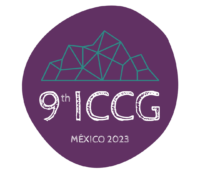Keywords: migration, borders, everyday life, South / Abstract: In recent years, the South Italian city of Palermo (Sicily) has proposed itself as a safe harbour for migrants, often in opposition to national and international politics of control and repression. From the ground of the city’s historical centre, after nine months of intense participant observation, volunteering and activism, my presentation will explore how the narrative of solidarity has shaped physical spaces, society and economies of this part of the city, observing how these transformations are both reproducing and challenging migration politics and racial hierarchies. My ethnographic study is informed by a critical reading of migration, border politics and racial capitalism and by a postcolonial approach to European history. It aligns with authors who denounce the unresolved colonial racism subtending the long-standing framing of migrants as disposable and deportable subjects (De Genova, 2010; Bhambra, 2016; Dadusc, 2019; Tazzioli, 2020), and who expose how Western understanding of belonging has been historically built and reinforced through the construction and repression of the racialized other (McKittrik, 2011; Kobayashi, 2013; Hawthorne, 2021). From 2015 onwards emergency discourses have grown drastically in Europe, giving rise to generalized right-wing nationalist responses, as well as moral panic throughout the self- proclaimed liberal, post-colonial and post-racial Europe (Isakjee et al., 2020). Reactions of fear and closure have also been fomented by the aftermaths of the economic crisis of 2008 and the regime of austerity (Bhambra, 2016). Public depictions of migrants hardly escape the dichotomy of them being either passive victims or subversive subjects, wanting more than basic provisional needs, accorded out of compassion (Dadusc, 2019). The interplay between economies of control and solidarity actions produces yet another dichotomy, that between the good white and the bad white, glossing over underpinning hierarchies. Drawing on observations from refugee camps in Calais (France) and Ventimiglia (Italy), authors like De Genova and Roy (2020), Isakjee et al. (2020), Tazzioli (2020) and Dadusc and Mudu (2020) have denounced the disposability of human life at the borders, where migrants are subjected to ‘legal’ practices, such as the preclusion of safe passages, the hostilization of the borders’ environment (e.g. through the banning of food distribution or water supply), the deployment of ractices of dispersal, enacted both to make migrants’ presence less visible, and especially to cut whatever form of self-organization and political voice, with all these practices often blamed on the migrant’s own making. Within this context, Italy represents a most important external border for Europe, making this country a preferential context for investigating the politics and counter-politics of migration. Furthermore, Italy’s “precarious whiteness” (Hawthorne, 2021:173), the country’s historical struggle to racially belong to a modern, whiteness-bound Europe, makes it a powerful in- between context from where to understand the power and limits of race in shaping peoples’ lives, from institutions and political discourse to everyday life and human interactions. This is particularly relevant in Sicily, historically described as a disadvantaged part of Italy, one of many ‘othered’ souths within Western borders produced by Eurocentrism (Giglioli, 2017). In recent years, Palermo, Sicily’s main city, has proposed itself as an exception to aggressive responses to immigration. International press has described the city as ‘a crossroad’ (Bradley, 2018), a ‘heaven for refugees’ (Kirchgaessner, 2015), where ‘tout le monde est palermitain’ (Chabas, 2018). My study aligns with those authors(Hall, 2021; Lafazani, 2021) who investigate how bordering practices exceed the ‘extra-ordinary’ geography of the borders to infiltrate everyday life in the city. It sees urban space as a preferential site for exploring how national and international bordering practices – and migrants’ lives accordingly - are embedded within other global/local processes, such as economic crises and restructuring, governance changes, politics of urban regeneration; how they embed within specific histories and geographies; how they are reproduced and/or challenged through everyday human encounters, going beyond simplified dichotomies and towards a more layered understanding of the encounter with the ’other’. My presentation will explore how the narrative of ‘hospitality’ has shaped Palermo’s historical city-centre - in terms of economies, services, research culture, aesthetic – creating a micro- community of students, social workers/practitioners, activists, volunteers (both locals or coming from other Italian regions or from abroad) working with migration-related realities and connected to global networks of solidarity, but also of new inhabitants simply attracted by an image of the city grounded on perceived diversity and coexistence of contrasts. The presentation will touch upon two main reflections. First, focusing on the role that migration-related activities have come to play within the city’s driving economies (tourism and the third sector), I will offer a critical and nuanced reading of the narrative of hospitality and its above mentioned consequences, seeing them not only as a form of resistance to the racialized border regime, but as a part of it, tightly interrelated, existing because of the latter. Also, I will argue that the urban transformations related to the hospitality narrative are not just a political stance, but are embedded within a broader process of social/economic/political/cultural change and reaffirmation of the city on the national and international scene, started in the late ‘80s. Second, I will argue that the hyper-visibility of the safe harbour narrative and of successful forms of solidarity, intersected with a sort of normalized southern lifestyle - based on diffused informality, scarce infrastructure and a huge reliance on networks to get things done - which is perceived to affect everyone indiscriminately, flattens how borders related to the migrant status manifest violently daily, through slow and complex bureaucracy, heightened difficulties in meeting basic needs such as housing and jobs, restricted options, lack of information and direction and everyday racism, with heightened problematics when all of this intersects gender/age/mental health. At the same time I will look into how the coming together of a supportive community and the existence of a close-knit network of places of solidarity create a fertile ground for counter-politics, through everyday encounters, clashes and negotiations.
